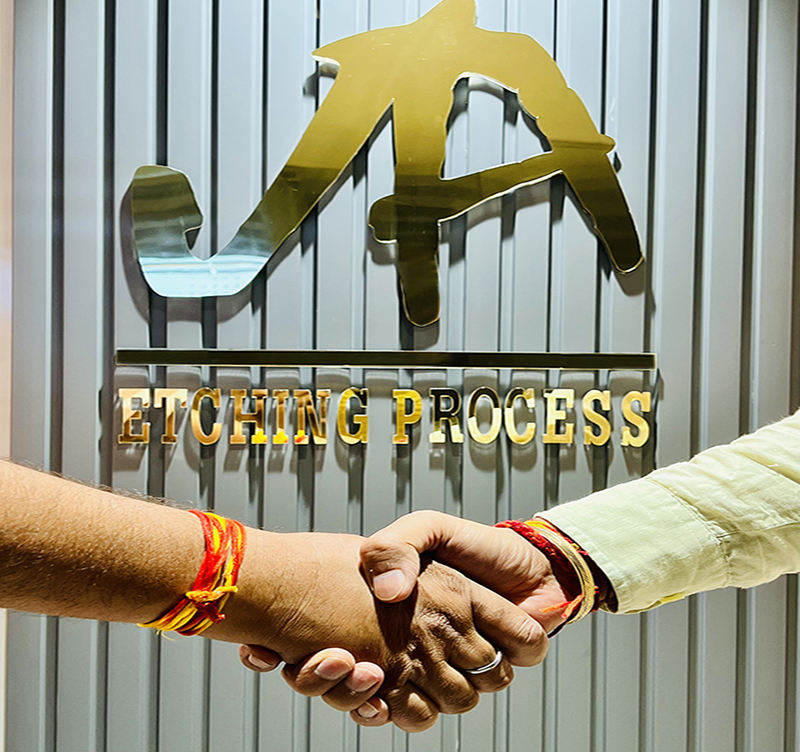Laser marking on metal is a precise and reliable method of marking metal surfaces that has become increasingly popular in recent years. The process involves using a high-powered laser beam to remove material from the surface of a metal object, leaving a permanent and high-quality mark. Laser marking on metal is an advanced technology that offers many benefits over traditional marking methods, including greater accuracy, speed, and flexibility.
One of the primary advantages of laser marking on metal is its ability to create precise and detailed markings. The laser beam can be programmed to create intricate designs, logos, barcodes, and other critical information with an unparalleled level of accuracy. This makes laser marking on metal ideal for applications where precision is essential, such as in the aerospace, medical, and electronics industries. Another significant advantage of laser marking on metal is its speed. Unlike traditional marking methods, such as stamping or engraving, laser marking can be completed quickly and efficiently. This is particularly important in industries that require high volumes of products to be marked, such as in the automotive or manufacturing sectors.
In addition to speed and precision, laser marking on metal also offers greater flexibility than traditional marking methods. The laser beam can be adjusted to mark metal objects of various sizes, shapes, and materials. This means that laser marking on metal can be used to mark a wide range of products, from small medical devices to large industrial parts. Laser marking on metal is also a more environmentally friendly option than traditional marking methods. Unlike stamping or engraving, laser marking does not produce any waste material. This means that laser marking on metal can help companies reduce their environmental impact and comply with increasingly strict environmental regulations.
One of the most significant advantages of laser marking on metal is its ability to create a permanent mark. The laser beam creates a permanent mark on the metal surface, which is resistant to fading, scratching, and other forms of wear and tear. This makes laser marking on metal ideal for applications where the mark needs to remain visible and legible for an extended period, such as in the aerospace or medical industries. Laser marking on metal has numerous applications across a wide range of industries. In the automotive industry, laser marking on metal is used to mark parts with critical information, such as serial numbers and barcodes, to ensure traceability and quality control. In the aerospace industry, laser marking on metal is used to mark parts with identification codes and serial numbers to track the life of components and ensure safety. In the medical industry, laser marking on metal is used to mark surgical instruments and implants with critical information, such as the manufacturers name, lot number, and expiration date.
In addition to its industrial applications, laser marking on metal is also becoming increasingly popular in the jewelry industry. Laser marking on metal allows jewelry manufacturers to create intricate designs and patterns on metal surfaces, which was previously difficult to achieve using traditional methods. While laser marking on metal has numerous benefits, there are also some considerations that companies should keep in mind. One of the most important considerations is the type of laser used for marking. Different lasers are suitable for different metals and materials, and companies should ensure that they use the appropriate laser for their specific application. Another consideration is the cost of the laser marking equipment. Laser marking equipment can be expensive, and companies should carefully evaluate the costs and benefits of implementing laser marking on metal before making a significant investment. In conclusion, laser marking on metal is a highly precise and efficient method of marking metal surfaces that offers numerous benefits over traditional marking methods. It is a versatile technology that has applications across a wide range of industries, from automotive and aerospace to jewelry and medical. While there are some considerations that companies should keep in mind when implementing laser marking on metal, the benefits of this technology make it an indispensable tool for ensuring quality, efficiency, and compliance in modern manufacturing.
Frequently Asked Questions?
Laser marking is a process that uses laser technology to create permanent marks or engravings on a wide range of materials. It involves using a laser beam to modify the surface of the material, resulting in high-contrast and precise markings.
Laser marking can be performed on various materials, including metals (such as steel, aluminum, titanium), plastics, ceramics, glass, wood, leather, and more. Different laser systems and parameters are used depending on the material type and desired marking effect.
The type of laser marker, the parameters utilised to make the mark, and the target material all affect how deep a mark is.
For instance, it is simple to regulate and adjust the depth of a single mark on plastic, which can range from a few millimetres to over 1mm. However, deep engraving takes much longer to complete because metal marks are often only 10 to 90 m deep.
Thus, by simply adjusting the laser strength and marking speed, a broad range of marking styles are possible.
Yes, laser markings can be customized and personalized to meet specific requirements. Laser systems offer flexibility in creating various fonts, designs, sizes, and even variable data, allowing for unique and tailored markings on individual products or parts.
Different kinds of laser markers are available from Jai Ambay Etching Process:
UV (wavelength: 355 nm)
(1064 nm wavelength) hybrid
(1090 nm wavelength) fibre
CO2 (wavelength: 10600 nm)
Green (532 nanometers)
Metals cannot be marked by CO2 lasers. For the majority of metal marking applications, hybrid or fibre laser markers are preferable.


